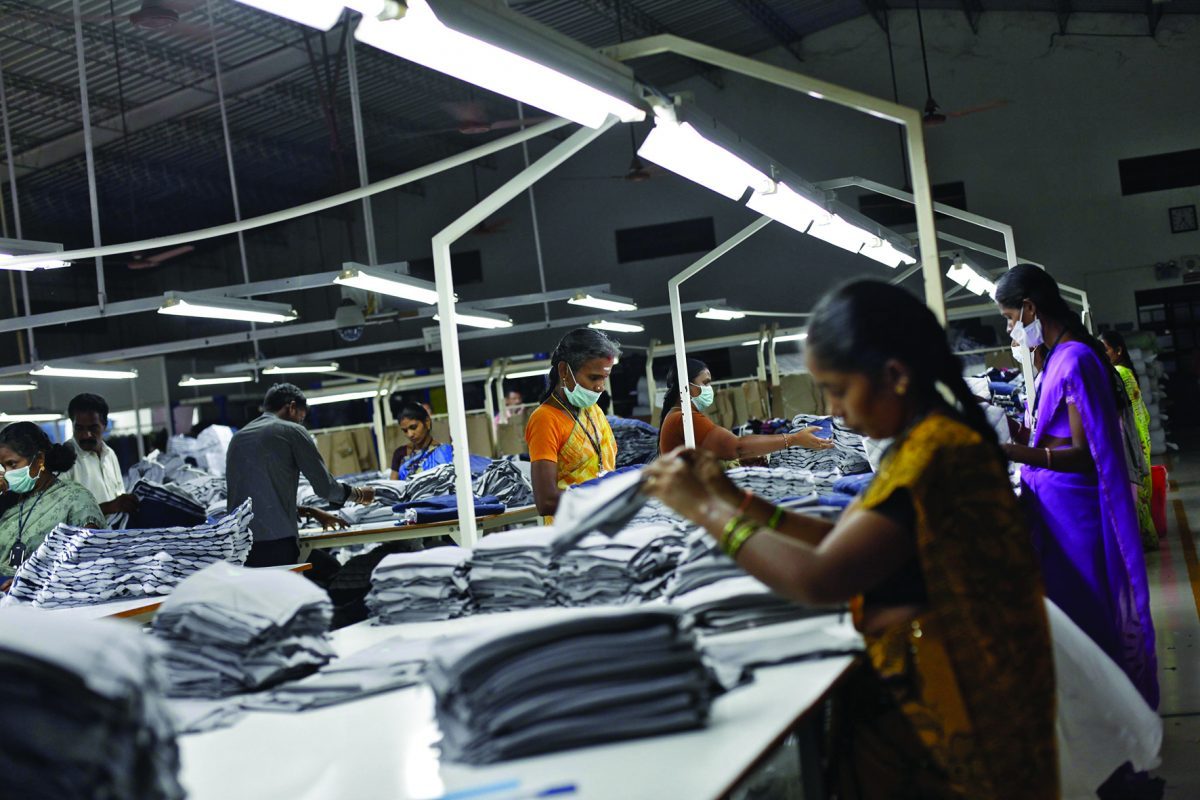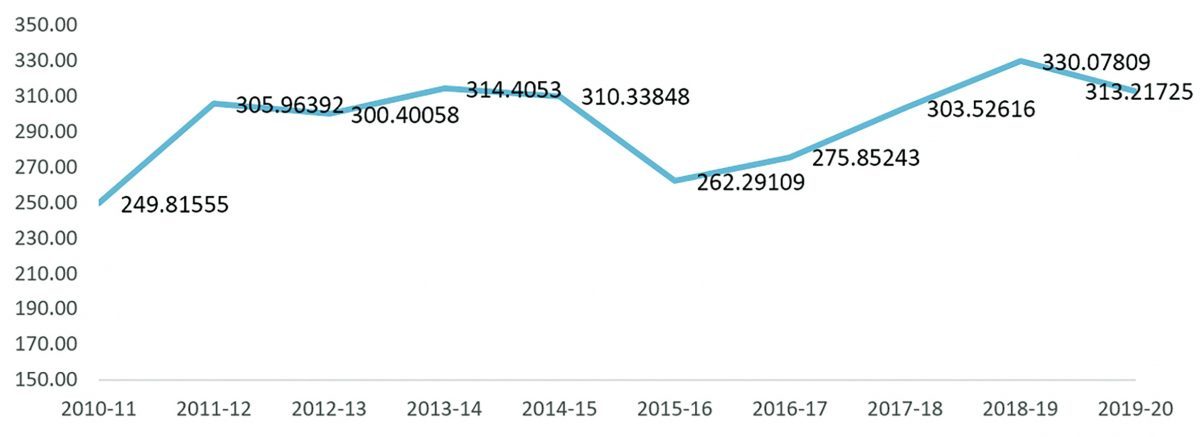The Coronavirus pandemic has significantly altered the global trading environment, including for India. However, as major countries in the world are looking at realigning their trading strategies, along with diversifying their import sources, the present situation makes India a reliable and stable partner country for sourcing goods of high quality as well as services

India enjoys a range of beneficial factors. The Government of India has accorded highest priority to enhancing competitiveness of Indian goods and services. In the last several years, infrastructure construction has accelerated and a new department has been established for faster logistics movement. With a strong and diverse export profile reaching out to all geographies, India is well placed as a potential import source for many large trading partners.
With several Government incentives in place, pharmaceutical sector has huge potential to boost India’s exports.
The Government’s Make in India initiative to boost the country’s manufacturing industry would further boost demand, while the Digital India campaign with a focus on creation of digital infrastructure, digital delivery of services and increasing digital literacy provides an impetus to India’s exports through improved digital connectivity
India’s focus on innovation and R&D across sectors, with skill upgradation and development along with a young, entrepreneurial and a talented workforce are also some of the major factors that place it as an ideal destination for investments and sourcing of exports.
Sectors of Opportunities
India is a largely diversified economy and has immense capacity in a range of sectors. Known for its quality and standards, Indian exports reach many advanced and emerging economies and with a growing market, a facilitative business environment and multiple sectors for investments, other countries would benefit from sourcing products from India. Some Indian sectors with significant export potential and investments are highlighted below.
Automobiles
The Automobiles Industry in India has played a key role in driving India into the global economy. The Indian automobile industry is the fourth largest in the world, with the country being the fourth largest manufacturer of cars and the seventh largest manufacturer of commercial vehicles as of 2018. India’s vehicle component industry has emerged as a robust and high-quality sector, with more firms winning the prestigious Deming Prize for Quality than any other country.
The Automobiles Industry in India has played a key role in driving India into the global economy
The Government encourages foreign investment in the sector by allowing 100% FDI under the automatic route. Since 2000, the country’s the industry has attracted FDI worth US$ 24 billion since 2000 and is the 6th largest sector for FDI. Exports of the sector stand at around US$ 15 billion.
The industry has several advantages globally as well. Industry analysis has shown India to be an attractive base for exporting cars to third country markets. Also, exporting cars from India is also cheaper than some of the major economies, such as Europe.
Further, the evolving Indian automotive electronic space provides a massive opportunity for innovation and investment.

Electronics
India has one of the largest Electronics markets in the world and the industry is expected to grow by US$ 400 billion by 2025. Further, the consumer electronics and appliances industry in India is expected to become the fifth largest in the world by 2025, while the electronics market is projected to grow at a CAGR of 17% during 2014-20. With the sector open to 100% FDI, it is expected to expand further with greater incoming investments. India’s digital revolution and the Government’s focus on using technology to improve the delivery of services, has opened up further opportunities for the sector and has boosted the manufacturing of innovative products.
Chemicals
India’s chemicals sector is highly diversified, producing around 80,000 commercial products. The chemical industry in India stands at $163 billion as of 2018, contributing to 3.4% to the global chemical industry.The industry is also a major employment provider, providing employment to more than 2 million people. The sector ranks at the 6th position in the world and 4th in Asia in terms of size. In terms of world exports, India ranks 17th in the world exports of chemicals.
Total exports of the sector stood at US$ 19.09 billion during 2018-19 and US$ 15.67 billion during January 2020. The sector is expected to grow to US$ 300 billion by 2025, registering an annual growth rate of 15-20%.
Pharmaceuticals
India is the third largest producer of drugs in the world, in terms of volume. The industry registered double-digit growth in the last few years and is expected to reach US$ 55 billion by 2020 from US$ 36.7 billion in 2017. The medical devices sector, a fast-growing market in India is expected to grow by US$ 25 billion by 2025.
With many exciting trading and investment opportunities coming up in India and promotional policies in place, India has emerged as an ideal partner for the world
The sector is home to the largest number of USFDA approved facilities outside of the US. India effectively demonstrated its strengths across various healthcare segments and supplied medicines to many countries during the Covid-19 pandemic. Further, being the largest producer of vaccines in the world, India has also engaged in vaccine development,
Low costs, high production quality and regulatory conformity are some of the key growth drivers for the sector. Indian pharmaceutical exports stood at US$ 20.7 billion during FY 2020. The sector also attracts significant investments and registered FDI inflows worth US$ 16.50 billion between April 2000 and March 2020, as per estimates of the Department for Promotion of Industry and Internal Trade (DPIIT).

Textiles and Garments
The Indian textiles sector has a formidable presence both domestically and internationally and is extremely diverse, with hand-spun and hand-woven textile at one end and high-end capital-intensive products, on the other end. The sector contributed around 15% of India’s total export earnings during 2019.
The textiles and apparel industry India have strengths across the entire value chain in products such as fibre, yarn and fabric to apparel. With a wide range of products and a talented workforce, the sector has immense potential globally. With textile exports at US$ 20.5 billion, apparel exports at US$16.1 billion and handlooms at US$ 3.8 billion, India has become the second largest manufacturer and exporter in the world, after China, with a share of 5% of global trade in textiles and apparel.
With 100% FDI allowed in the sector and several policy initiatives undertaken by the Government, competitiveness of the sector is swiftly rising.
IT Services
With over 1000 global delivery centres, spread across 80 countries of the world, Indian India is one of the leading destinations for Information Technology (IT) and Business Process Management (BPM) services in the world. India’s IT & BPM industry is a booming sector, that registered a year on year growth rate of 7.7% during FY 2020. The revenue of the industry was estimated at US$ 191 billion and is estimated to reach US$ 350 billion by 2025.
The top destination for India’s exports during 2019-20 was the United States, followed United Arab Emirates, China, Hong Kong and Singapore
India has made significant strides in the digital space and innovations, and has now diversified its offerings using latest technology and leading ideas in the fields of artificial intelligence, machine learning and blockchain.
The sector has a large pool of digitally skilled talent and the revenue from the digital segment is expected to form 38% of the industry revenue by 2025. With expanding demand for exports across new verticals, particularly the digital space, the sector is expected to expand further in the coming years.
India’s Exports: Last Decade
Indian exports went up from around US$ 250 billion during 2010-11 to US$ 313 billion in 2019-20. The dip in exports was largely due to implementation of lockdowns and closing of many sectors by various countries on account of the Covid-19 outbreak.

The upward trend in exports is expected to continue with the pick-up in economic activity and easing of logistical issues.
India’s Top Export Items
During 2019-20, India’s top exports were in the categories of mineral fuels, mineral oils and products; gems and jewellery; machinery and mechanical appliances; organic chemicals and vehicles and parts other than railways or tramways. With manufactured goods as a significant proportion of its exports, India is a leading supplier in these products. Other top export items during the same period, were in the categories of pharmaceutical products; electrical machinery and equipment; and articles of apparel and clothing accessories, among others. The top destination for India’s exports during 2019-20 was the United States, followed United Arab Emirates, China, Hong Kong and Singapore. Other top countries included UK, Netherlands, Germany, Malaysia and Saudi Arabia.
Advantage India
Many notable reforms in the recent past, such as the Goods and Services Tax (GST), other taxation reforms and the continued liberalization of the FDI policy, has positioned India as major sourcing and investment destination.
Ease of Doing Business reforms have been taken up in mission mode by both Central and State Governments through various incentives for faster and simpler procedures to provide a facilitative business environment.